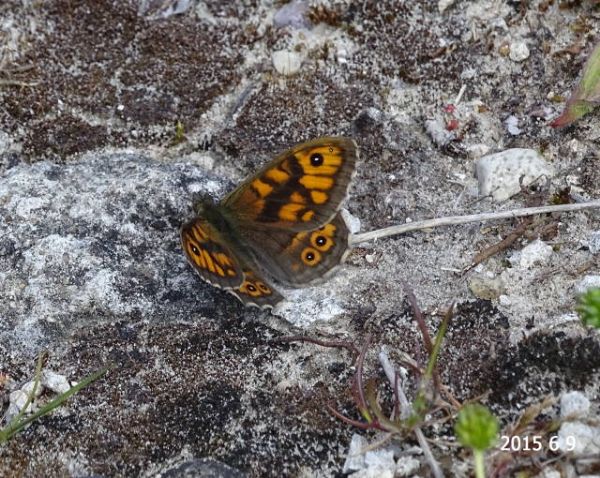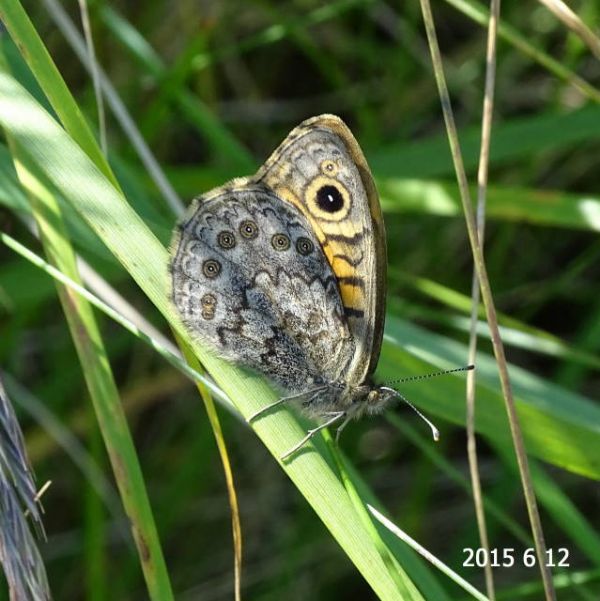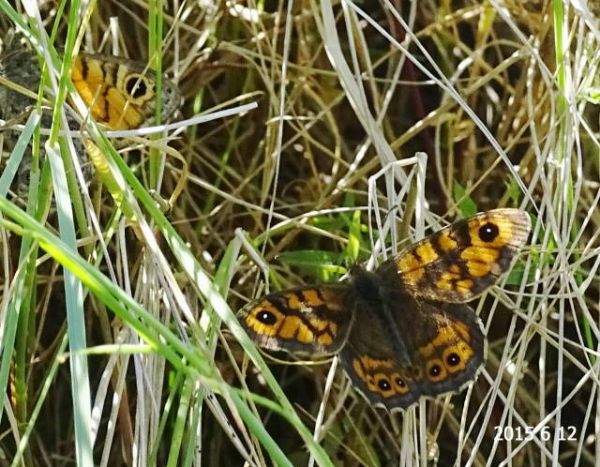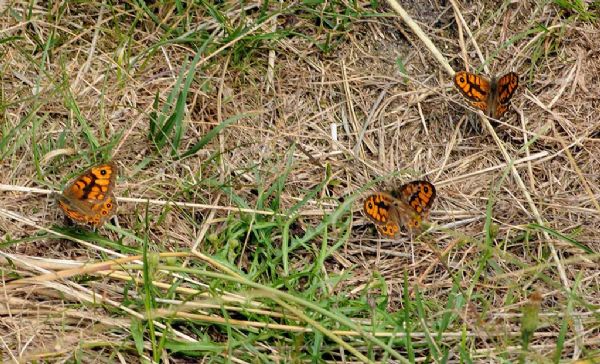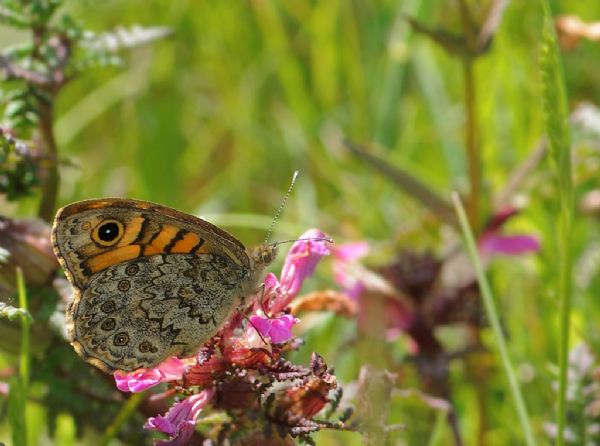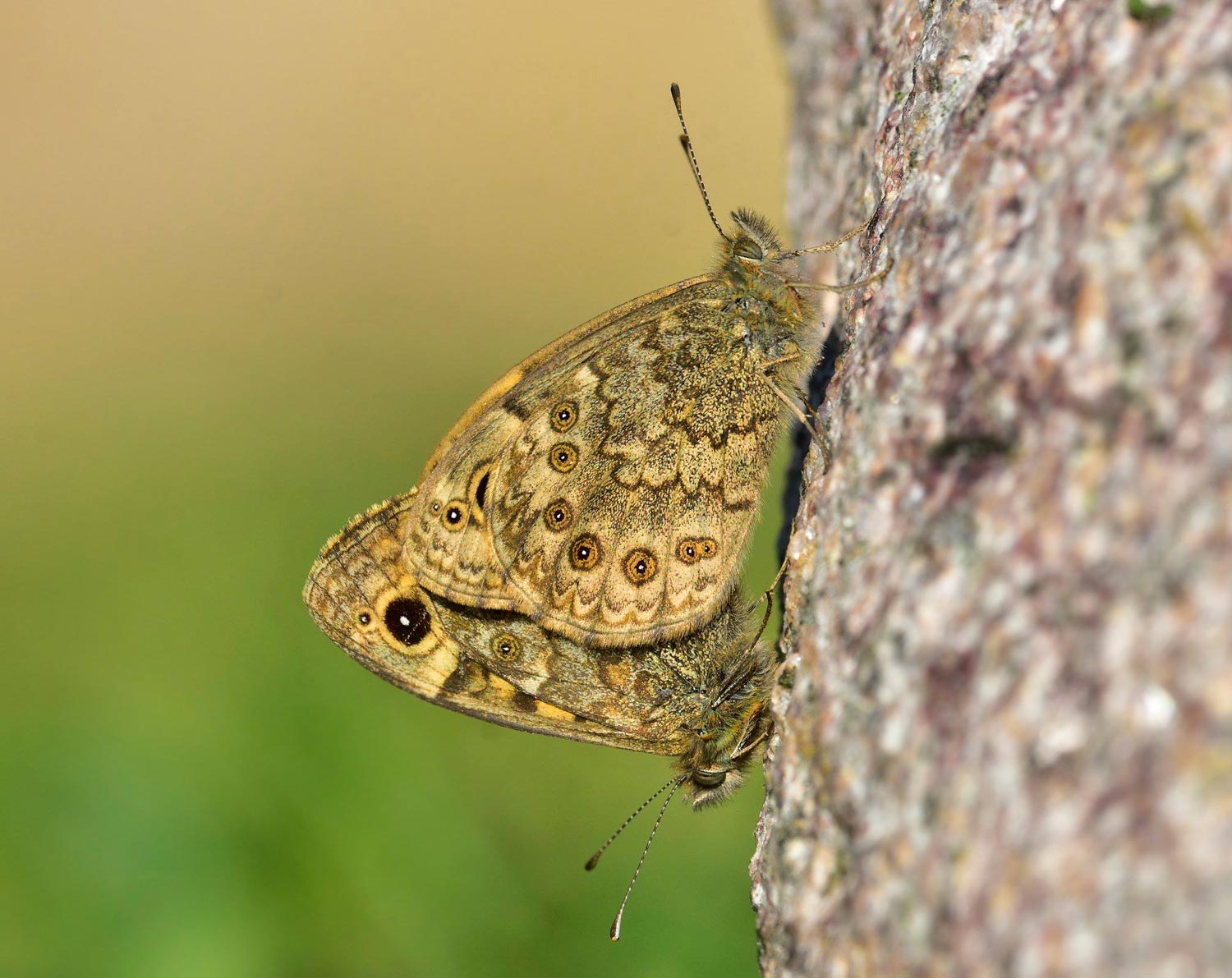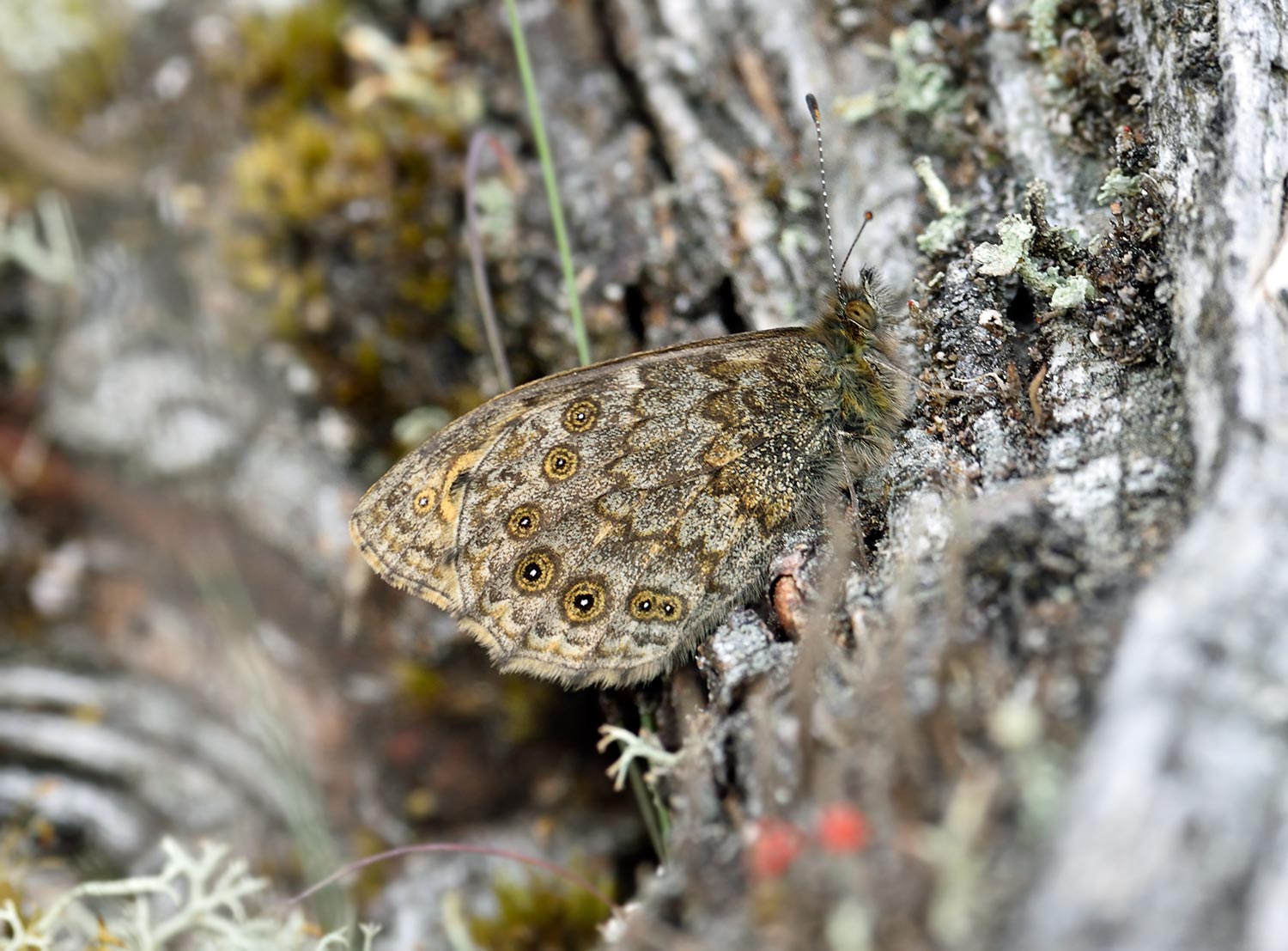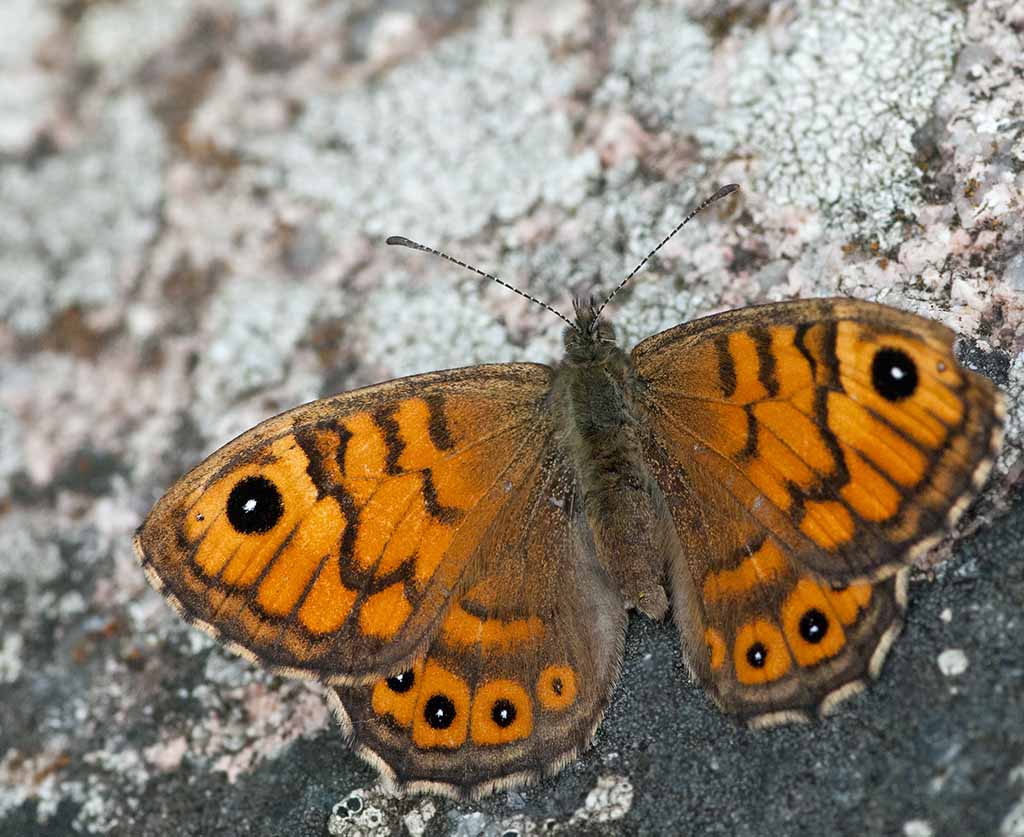Vejrandøje, han. Foto Nick Nyland.
Bemærk den brede mørke stribe af duftskæl tværs over forvingen
Vejrandøje – underside. Foto Nick Nyland.
Vejrandøje. Foto Nick Nyland.
Vejrandøjen er én af Fanøs specielle somerfugle.
På billedet ses en han, som har jaget en hun, der nu skjuler sig i græsset.
Møde mellem vejrandøjehanner ved Sønderho strand. Foto Søren Vinding
Vejrandøje – underside. Foto Søren Vinding
Vejrandøje i parring. Foto Per Alnor Kjær.
Læg også mærke til sommerfuglens underside.
Vejrandøjes underside. Foto Per Alnor Kjær.
Vejrandøje. Foto Søren Vinding.
Kendetegn
Vejrandøje har et vingefang på 35-43 mm.
Oversiden er orangebrun med mørke tegninger og øjepletter. Hannerne har en bred mørk stribe af duftskæl på tværs af forvingerne.
Undersiden er fint tegnet med en række øjenpletter langs vingekanten.
Findested på Fanø
Findes overalt på Fanø, hvor den er meget almindelig. Sidder ofte og soler sig i det varme sand på strandengene eller en markvej.
Når man møder vejrandøje på en markvej, “følger den ofte én på vej.” Den flyver op og sætter sig så længere henne ad vejen.
Hvornår på Fanø
Flyver fra midt i maj til midt i oktober.
Naturhistorie
Hannerne lever kun i få dage, men i den tid er de yderst aktive i jagten på hunner. Ved mødet med en hun, blafrer hannen på en meget voldsom måde en sky af duftstoffer ud fra forvingerne.
Efter parringen lægger hunnen æggene på forskellige græsarter.
Kulturhistorie
Selvom Vejrandøje kan findes i hele landet, er den kun almindelig på Djursland, i Nordsjælland, på Bornholm og i Blåvand-Fanøområdet.
Den anses ikke som en truet art.
Det latinske navn Megera er også navnet på en af furierne, kvindelig onde ånder eller hævngudinder i den romerske mytologi. Linné har muligvis kendt til artens voldsomme parringsadfærd og derfor valgt dette navn?
Kordinater
Siden er udarbejdet af: Nick Nyland 2015
